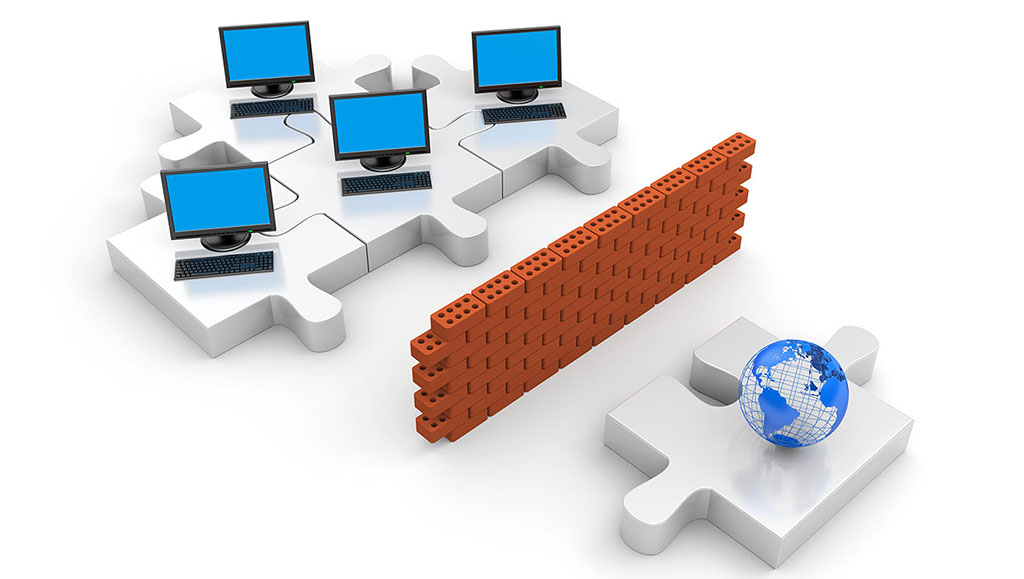It is essential for all organizations to protect their networks. With hackers increasing and becoming smarter day by day, the need to utilize network security tool becomes more and more impotent. Network security is any activity designed to protect the usability and integrity of network and data. In fact, network security is a term used to describe many different types of technology and various processes used to define a set of rules and configurations relating to network use, threats, accessibility, and overall threat protection. In this post, we will discuss the basics of network security.
There are many layers to consider when addressing network security across an organization. Network security combines multiple layers of defenses at the edge and in the network. Attacks can happen at any layer in the network security layers model. So, each network security layer implements policies and controls.
Network security is an organization’s strategy that enables guaranteeing the security of its assets including all network traffic and it typically consists of three different controls:
- Physical: Physical security controls are designed to prevent unauthorized personnel from gaining physical access to network components such as routers, switches, servers. Examples of these controls are locks, and biometric authentication. Door locks and ID passes are essential components of physical network protection.
- Technical: Technical network protection guards both stored and in-transit data from malicious software and from unauthorized persons. Technical security controls protect data against unauthorized personnel, and also malicious activities from employees.
- Administrative: Administrative security controls consist of security policies and processes that control user behavior.
Network security is the process of taking physical and software preventative measures to protect the underlying networking infrastructure from unauthorized access, misuse, malfunction, modification, destruction, or improper disclosure, thereby creating a secure platform for computers, users, and programs to perform their permitted critical functions within a secure environment. (Source: csoonline.com)
Network Security involves access control, anti-malware software, network analytics, endpoint security, web security, wireless security, firewalls, VPN encryption and many more.
Types of Network Security
- Anti-malware Software: The best anti-malware programs not only scan for malware upon entry, but also continuously track files afterward to find anomalies, remove malware, and fix damage. Read more about all types of malware.
- Application Security: Any application may contain holes, or vulnerabilities, that attackers can use to infiltrate your network. Application security encompasses the hardware, software, and processes that use to close these holes. In other words, a security manager need to employ hardware, software, and security processes to lock insecure applications.
- Firewalls: Firewalls put up a barrier between your trusted internal network and untrusted outside networks, such as the Internet. They use a set of defined rules to allow or block traffic. Read more about firewall.
- Network Access Control (NAC): A security manager must recognizes each user and each device. Then He/she can enforces security policies. He/she also can block non-compliant endpoint devices or gives them only limited access. Users that are permitted network access should only be able to work with the limited set of resources for which they’ve been authorized.
- Behavioral Analytics Tools: You should know what normal network behavior looks like so that you can spot anomalies or breaches as they happen. These tools automatically discern network activities that deviate from the norm. A good IT security professional must uses these tools.
- Cloud Security: It is a broad set of technologies, policies, and applications applied to defend online IP, services, applications, and other imperative data. Network Cloud security helps network users secure their network since Cloud security is more secure, more scalable, with reduced time to market, and usage-based costs.
- Data Loss Prevention (DLP): These technologies can stop people from uploading, forwarding, or even printing critical information in an insecure manner. Read more about DLP.
- IDS & IPS: Intrusion detection is the process of monitoring the events occurring in network and analyzing them for signs of possible incidents, violations, or imminent threats to security policies. Read more about IDS and IPS.
- Mobile Device Security: Hackers are increasingly targeting mobile devices and apps. You- as a security manager- need to control which devices can access your network. You will also need to configure their connections to keep network traffic private.
- Network Segmentation: Software-defined segmentation puts network traffic into different classifications and makes enforcing security policies easier. Creating VLANs is a powerful solution.
- Virtual Private Network (VPN): A VPN allows you to create a secure connection to another network over the Internet and it encrypts the connection from an endpoint to a network, often over the Internet. A remote-access VPN uses IPsec or Secure Sockets Layer to authenticate the communication between device and network.
- Web Security: A web security solution will control your staff’s web use, block web-based threats, and deny access to malicious websites.
- Wireless Security: One of the dangerous areas in the network security discussion is related to wireless network security. The number of devices that can be connected to the network wirelessly is very diverse. So the probability of attacking the network through wireless infrastructure is also very high. To prevent an exploit from taking hold, you need products specifically designed to protect a wireless network. Read about Wireless security protocols.
- Endpoint Security: It is the practice of securing endpoints or entry points of end-user devices such as desktops, laptops, and mobile devices against cyber security threats. Endpoint security has evolved from traditional antivirus software to providing comprehensive protection from sophisticated malware and evolving zero-day threats. In fact, endpoint security is seen as cyber security’s frontline.
- Security Information and Event Management (SIEM): These products aim to automatically pull together information from a variety of network tools to provide data you need to identify and respond to threats. (Source: csoonline.com) These products are available in different forms, including virtual and physical appliances and server software.
- Email Security: Email is usually used to spread malware, spam and phishing attacks. Attackers use deceptive messages to entice recipients to part with sensitive information, open attachments or click on hyperlinks that install malware on the victim’s device. Protecting emails is one of the most important and sensitive steps that must be done in any network security plan. Under no circumstances should you give up securing emails. Email security tools can block both incoming attacks and outbound messages with sensitive data. One of the most important steps to protect emails is to encrypt them. You can read more about email encryption here.
Network Security Certifications
There are some very valid certificate for network security:
- CISSP
- CompTIA Cybersecurity Analyst (CySA+)
- CompTIA PenTest+
- CompTIA Advanced Security Practitioner (CASP+)
- CCNP Security Certificate
- Certified Ethical Hacker certification
———————–
Sources:



















